
Since spontaneous healing of anal fistula is rare, surgery is required, in principle. There are currently four major types of anal fistula, and the "Sumikoshi Classification" is often used in Japan. For each type of anal fistula, the surgery is selected with the radical nature and function taken into account.

The typical surgical treatment methods for anal fistula that are currently being conducted in Japan are as follows:
Detailed techniques, procedures, and techniques may vary depending on the decision of the primary doctor based on individual pathological conditions or the patient's wish. Therefore, read this just as a reference.
(1) Lay-open operation
(2) Sphincter-sparing surgery
(3) Seton method
A method of cutting along the whole fistula to open up from the primary orifice on the anal side (the site where bacteria enter) to the secondary orifice (the exit of pus) on the skin side. It is used for subcutaneous fistula (IL), low intersphincteric fistula (IIL), etc.

A method of opening the front side of the fistulous tract and scraping out a bad mass inside.

A method of cutting all of the fistulous tract.
This is a method to remove the anal fistula with the anal sphincter preserved as much as possible. The method includes various surgical procedures, including those that preserve the external anal sphincter, those that preserve the internal anal sphincter, and those that preserve both.
< Reference: an example of operation flow >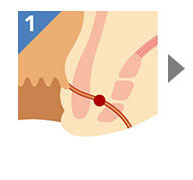
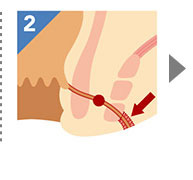
Cut out the fistulous tract from the secondary orifice to the external sphincter on the skin side.
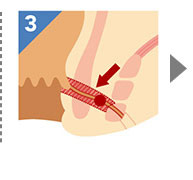
Cut out the fistulous tract from the primary orifice to the origin of pus (primary site).
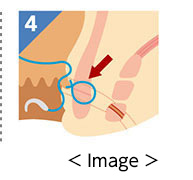
Suture the resected site from the primary orifice to the origin of pus (primary site).
In this method, the fistulous tract is gradually removed over time by slightly tying the tract through a rubber or seton (a string) soaked in chemical solution.
Rubber or nylon thread is used for seton. As the body tries to push the foreign matter out, seton gets gradually shallower and finally ejects it out.
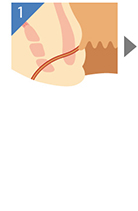
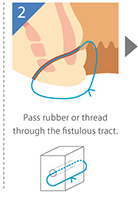
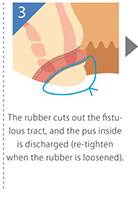
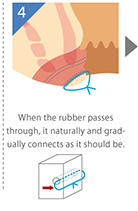
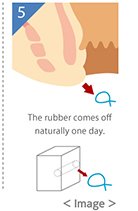
[Reference]
1) Guidelines for Diagnosis and Treatment of Anal Diseases and Rectal Prolapse 2020
2) Iwadare J.: The Japan Society of Coloproctology, 66:1011-1025, 2013